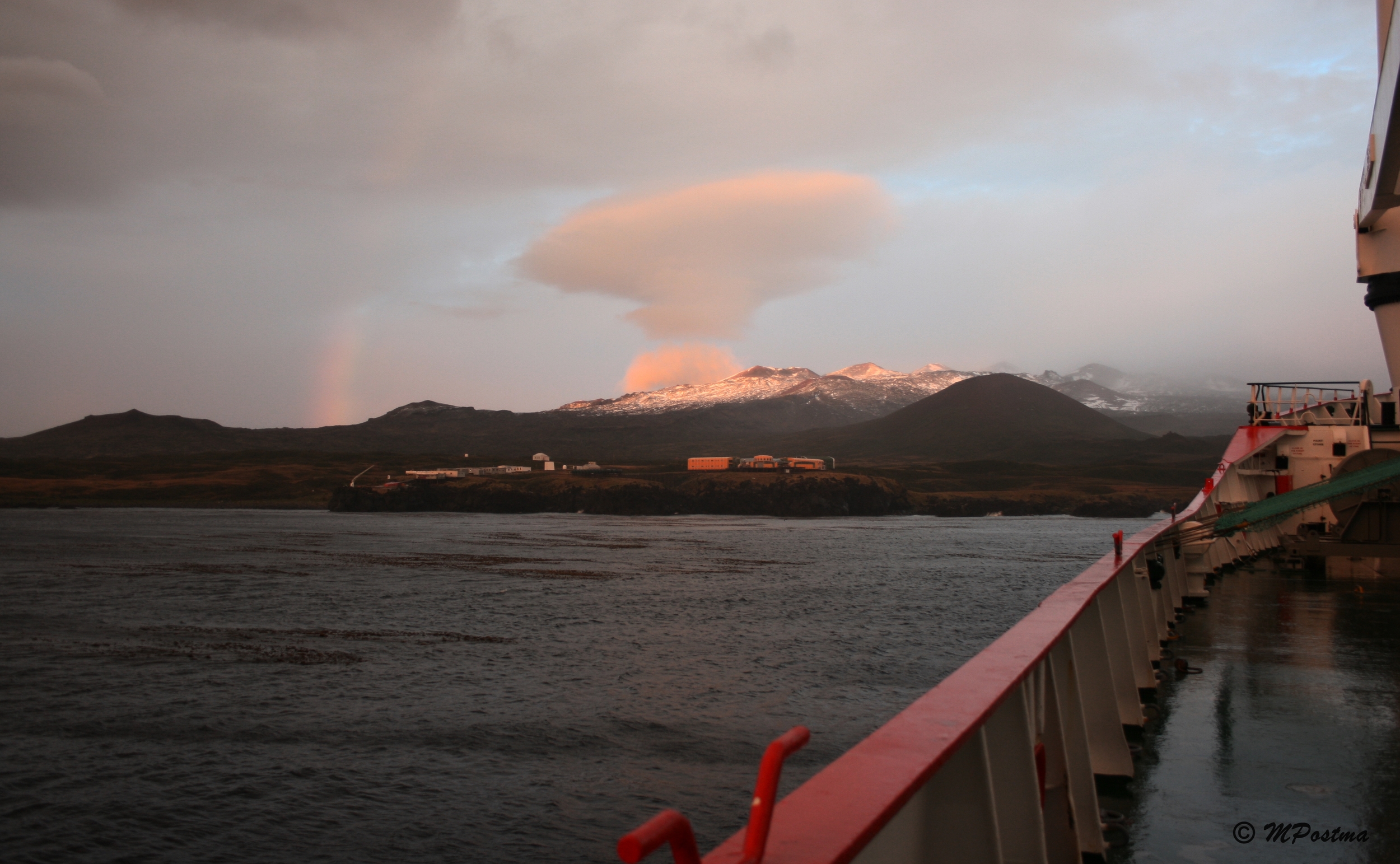Launching of the Marine Mammal Programme at the Prince Edward Islands
Program History partially drawn from:
Bester et al. 2011 The Marine Mammal Programme at the Prince Edward Islands: 38 years of research. African Journal of Marine Science. 33(3): 511–521.
The Mammal Research Institute (MRI), under the then Director, Prof. John D Skinner, formally commenced marine mammal research on the Prince Edward Island Archipelago (PEIA) in 1973. Patrick R Condy was dispatched to Marion Island, the larger and southernmost of the two islands in the archipelago, for 18 months. His purpose was to conduct scientific research on the southern elephant seal Mirounga leonina population of the archipelago. However, well before his arrival, Robert W Rand, biologist on the 8th South African Expedition to Marion Island (October 1951–April 1952) published the first scientific papers on the seals of the island (Rand 1955, 1956, 1962), followed by La Grange (1962) and DeVilliers and Ross (1976), with van Zinderen Bakker Jr (1967) including marine mammals in his observations on animal life at the PEIA. A complete bibliography of scientific and popular literature of the first 50 years of all scientific endeavours at the PEIA can be found in Hänel and Chown (1999).
From 1973 to the present, mammalogists and their assistants who were deployed at Marion Island under the MRI's Marion Island Marine Mammal Programme (MIMMP) collected scientific information on elephant seals and fur seals Arctocephalus spp. systematically every summer. Throughout, personnel were also alert to chance sightings of other cetaceans, seal vagrants or transients and other unusual and/or interesting phenomena. Predation by fur seals, in particular by Antarctic fur seals Arctocephalus gazella, on king penguins Aptenodytes patagonicus at the island were first noted in August 1986 and has been monitored subsequently. Personnel also noted incidence of entanglement by seals in man-made debris and, wherever possible, removed the entangling material.
The other island in the archipelago, Prince Edward Island, lacks any infrastructure and has been subjected to relatively little research effort over the same time period, especially since it was declared a special nature reserve in November 1995 (PEIMPWG 1996). Visits to the island were usually conducted during the months of March–May in several years between 1965 and 1985. In the course of these, breeding of Antarctic fur seals at Prince Edward Island was first confirmed in 1975 and population counts documented the period of recovery subsequent to the 1931 cessation of sealing. During a short visit to the island in November 2004, elephant seal pups of the year were counted and tagged, and dedicated surveys of elephant seals and fur seals were undertaken in December 2001 and 2008 (Crawford et al. 2003, Cooper et al. 2009).
Coordination of research (1981 to the present)
Between April 1981 and March 1996, coordination of the overall research effort was facilitated by the appointment of a dedicated Antarctic Research Officer (ARO) within the South African National Antarctic Programme (SANAP). This position was located at the MRI, and although the ARO position was terminated in 1996, the officer (Marthán N. Bester) subsequently procured a permanent, full-time academic position within the Department of Zoology and Entomology at the University of Pretoria (UP) in April 1996. This ensured continuity in research. Seal research collaborations were forged especially with the then Branch: Marine and Coastal Management (now Oceans and Coasts of the Department of Environmental Affairs [DEA]), the University of Cape Town, the University of Venda, Port Elizabeth Museum at Bayworld, the Alfred Wegener Institute for Polar and Marine Research (Germany), Australian Antarctic Division, Hubbs-Sea World Research Institute (USA), Norwegian Polar Institute, Instituto Antartico Argentino (IAA), the Centro Nacional Patagonico (CENPAT) (Argentina), Deakin University (Australia) and the University of Tasmania (Australia). These collaborations continue to the present. The appointment of a UP graduate associated with the MIMMP (Nico de Bruyn) to a permanent, full-time academic position within the Department of Zoology and Entomology (January 2010), and alliances formed with other former MIMMP participants employed at, for example, Oceans and Coasts, Nelson Mandela University (NMU), Port Elizabeth Museum at Bayworld, and University of Venda, was significant in the continuation and expansion of the MRI’s drive towards a strong and scientifically productive involvement in SANAP and other national Antarctic programmes through the study of marine mammals. However, this research and the underlying long-term multispecies monitoring was always subject to continued procurement of funding through three-year cycles from the Department of Science and Innovation’s National Research Foundation (NRF) within SANAP.
By 2019 it became evident that the scientific growth of the MIMMP and the operational maintenance of the globally important monitoring of multiple species, had become too big a task for one person to shoulder. Nico de Bruyn thus started the process to establish a robust contingency plan to ensure the continuation of the MIMMP beyond the need for a single person to drive it all. By 2024, the new South African Polar Research Infrastructure (SAPRI) had fledged as a node of the South African Environmental Observation Network (SAEON), and a dedicated position to manage the long-term monitoring of seals, whales and flying seabirds had been established. Monitoring was no longer dependent on scientific research three-year funding cycles through the NRF, as government had agreed that the long-term monitoring itself should receive its own support through this new SAPRI. The MIMMP therefore lives on proudly as one of the longest, uninterrupted multi-vertebrate-species monitoring programmes in the world!










